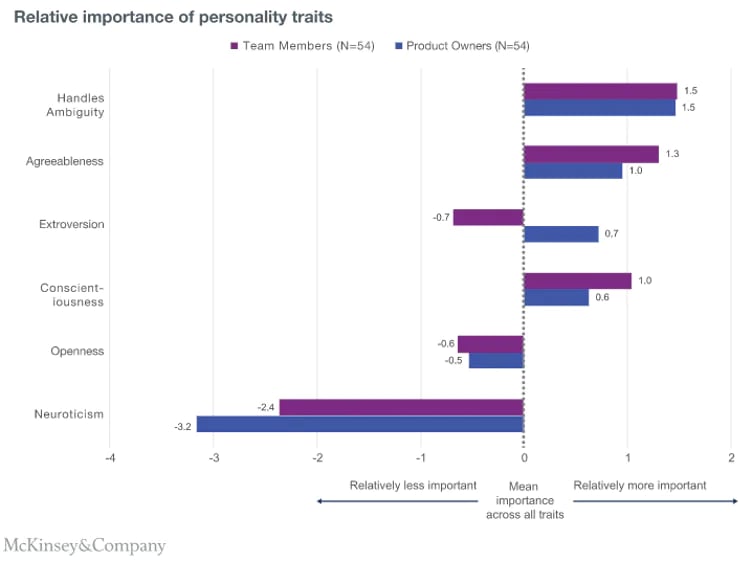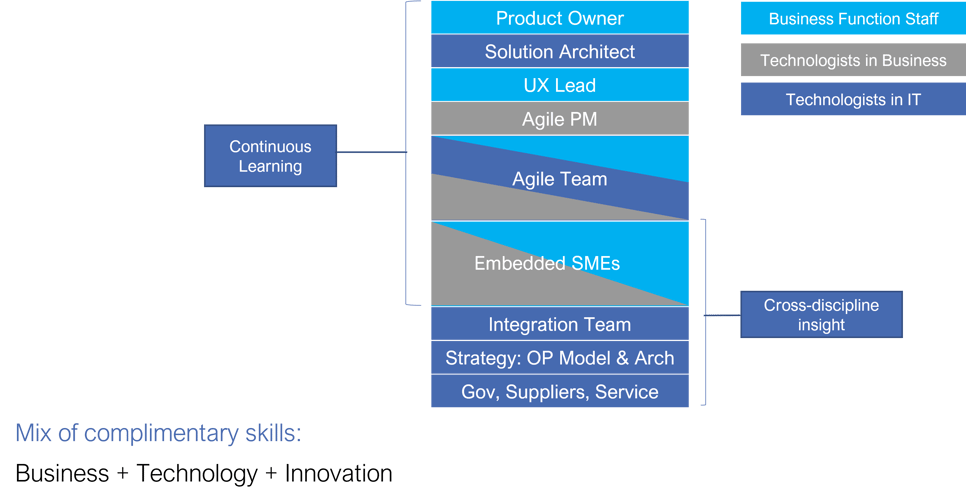I recently presented at an event in Dublin focused on teams delivering digital transformation and it was great to hear from technology leaders about the changes taking place in their own organisations. We all saw the shift in how technology enabled change is now being delivered –moving away from the IT organisation into the business.
Working with a lot of IT teams in many organisations it struck me that this was an opportunity and not a threat. For many years, as an architect, I’ve always talked about the continual need to engage business stakeholders and truly align to business strategic goals, not sit in our ivory towers waving our arms and drawing unusable models. This provides the opportunity for IT to become an enabler of this change, to foster the environment where transformation can happen and succeed.

So what is the shift over the last decade and how should IT respond?
The shift we’re seeing is not only in how transformational change is delivered but also by whom. We understand the shift from traditional to continual delivery, from finite to persistent teams, from control to autonomy, from a focus on delivering functionality to delivering value. We’ve also seen the shift in how these teams are funded and governed, moving from a gated model to a more continuous self-governing model, essentially the shift from the project mindset to the product or service mindset.
What’s new, particularly over the last few years is the shift in who delivers the change. In a recent survey by Gartner they asked organisations where the technology teams were and they found a surprising 42% of people in technology roles no longer sat in IT but within the business. That survey was published in 2020 so we can expect that number to of risen since then. When you think about it this is probably no surprise especially with the advent of new technology platforms for as robotic process automation, advanced analytics, or low/no code platforms. These have given rise to new roles in the organisation such as the process automation specialist, data scientists and the citizen developers.

So what does this change mean for the IT organisation? Well I actually think it’s a real opportunity for them to not only embrace that change but to actually take a leading role. Be there to create the environment where transformation can succeed; providing the platforms for change and to bring their years of experience to bear. So I think there were five areas where the IT organisation should and can contribute:
- Firstly it’s about setting clarity of expectations for those transformation teams – so helping to set the guardrails and boundaries for how change should be delivered. Providing guiding principles and expectations.
- Secondly they should be providing the context to transformation teams, explaining how their product or service fits into wider strategic roadmaps but also showing how it could contribute to other areas of the business.
- Thirdly they should be providing those platforms I spoke about earlier, RPA, Low/NoCode etc but also systems of record and data management platforms to help accelerate the transformation.
- Fourthly providing insight on how best to architect a solution or service, defining standard and patterns but also building composable services that could be leveraged by teams to create new services or products.
- Lastly doing what IT teams do best advising on how to build scalable, resilient and secure services and solutions (given they’ve been doing it for last 30 years or so!)
The IT organisation needs to allow these new teams to explore, self-regulate and contribute to technology capability of the organisation.

So, we’ve talked about how delivery has changed and those now responsible, we’ve also talked about IT’s new role in this but one area we haven’t delved into is the makeup of those transformation teams.
A recent survey from McKinsey (about what makes successful delivery teams) highlighted certain traits that seemed to be present in the most successful teams. One of these traits was identified as the “secret sauce” – Agreeability. They found the most important characteristic for successful teams was trust, a key tenet of agreeableness. Another main characteristic of being agreeable was straightforwardness: “being open and frank with one’s viewpoints while still being courageous enough to politely voice opinions that conflict with the team’s.”
Being agreeable is NOT about blindly agreeing without any thinking; it’s about testing ideas and listening to alternative perspectives, which improves task performance.
Agreeableness means saying “yes, and…” instead of “yes, but.”
Agreeableness is the secret sauce of successful agile delivery teams
McKinsey
If agreeableness is a key trait then what are the kind of roles that make up transformation teams? This can differ across industry and organisations but there are certain similarities across teams we work with. The agile/persistent team is usually made up of product owner, solution architect, UX lead and Agile PM with various specialisms in delivery team. The important piece though is to make sure that the team is made up of people from across business units and technologists in the business and IT. This team should also be supported a cross disciplined group to provide insight and steer. This cross disciplined group could consist of reps from integration and platform teams, strategy and architecture or even supplier and service management. The key to successful teams is to have a broad set of skills and perspectives to drive innovation: business + technology + agreeability = innovation and success.

In summary I want to leave you with 5 main points to take away to help you when building and delivering your own transformation:
- Focus on value rather functionality: build persistent teams where possible and focus on your customers and value they require
- Focus on empowerment rather than control: do not try and control teams but provide the environment for them to feel empowered
- Favour agreeability over other traits: think about the traits you want in your team instead of just hard skills required for roles
- Build multi-disciplined teams wherever possible: try wherever possible to bring business, technology and other people together to drive innovation through diversity
- Build the IT engine room to power change: the IT organisation has a big role to play in shaping strategic direction and guiding teams on how to build resilient and scalable digital services
In my next article I’ll be looking to understand more about diversity and different perspectives and how this positively impacts innovation.
If you want to find out more or discuss how Peru could help you in your own transformation journey please get in contact with us today.



